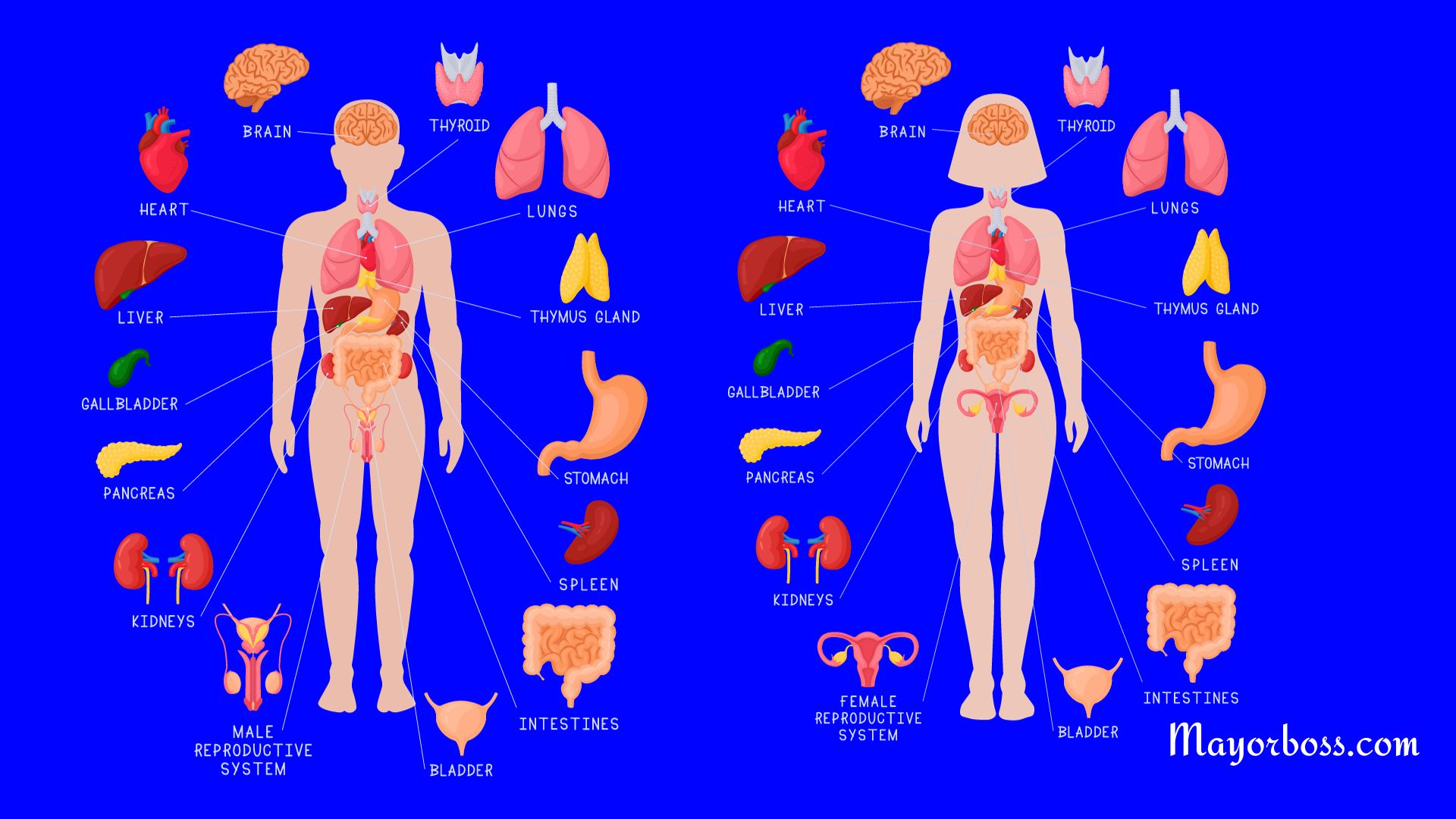Organs of the Human Body
The human body, a marvel of nature, houses a vast array of intricate organs working in harmony to sustain life. From the brain’s complex functionalities to the heart’s rhythmic beats, each organ has a unique role.

The Brain
The brain is arguably the most critical organ in our body. As the hub of our nervous system, it’s responsible for the majority of our body’s functions. Located in your skull, it controls everything from your thoughts to your movements.
Parts of the Brain
- Cerebrum: This is where your thoughts, learning, and emotions originate.
- Cerebellum: Helps in coordinating movement and maintaining balance.
- Brainstem: A crucial structure that regulates your heart rate, breathing, and other vital functions.
The Heart
Your heart, a muscular organ situated in your chest, tirelessly pumps blood throughout your body. This ensures oxygen and nutrients reach every cell, keeping them alive and functioning.
Important Sections of the Heart
- Left and Right Atrium: These are chambers where blood enters the heart.
- Left and Right Ventricle: Chambers from which blood is pumped out to the rest of the body.
Lungs
Situated in the chest and protected by the rib cage, the lungs are responsible for supplying oxygen to our bloodstream. They also expel carbon dioxide, a waste product, from our bodies.
Inside the Lungs
- Bronchial Tree: A system of air tubes that transport air into our lungs.
- Alveoli: Tiny air sacs where the exchange of oxygen and carbon dioxide takes place.
Kidneys
Situated in the lower back, kidneys filter out waste products from your bloodstream. This waste is then excreted as urine.
Inside the Kidney
- Renal Pelvis: The central part of the kidney.
- Renal Cortex: The outer section where filtering happens.
Digestive System
Starting from the mouth and ending in the rectum, the digestive system breaks down food, absorbs nutrients, and expels waste.
- Stomach: Breaks down food using acid.
- Small Intestine: Where most nutrient absorption occurs.
Reproductive Organs
Both males and females have specific reproductive organs.
- In Men: The prostate gland, testes, and vas deferens play roles in producing and transporting sperm.
- In Women: Ovaries produce eggs, and the uterus hosts a developing fetus.
Ears
The ears allow you to hear sounds and maintain balance. Key components include:
- External Ear: Captures sound waves.
- Middle Ear: Amplifies sounds.
- Inner Ear: Sends sound information to the brain and assists with balance.
Arterial Circulation
Your arteries transport oxygen-rich blood from the heart to the rest of the body. Major arteries include:
- Aorta: The main artery leaving the heart.
- Carotid: Supplies blood to the brain.
- Femoral: Carries blood to the lower limbs.
Eyes
Your eyes aren’t just the windows to your soul; they are complex organs that allow you to perceive the world around you. The main components include:
- Retina: Detects light and sends signals to the brain.
- Lens: Focuses the light onto the retina.
- Cornea: The outer layer that covers the front of the eye.
Examples of eye-related issues are myopia (short-sightedness), hyperopia (long-sightedness), and cataracts (clouding of the lens).
Skin
The largest organ of your body, the skin, acts as a protective shield against environmental hazards. It’s made up of three layers:
- Epidermis: The outermost layer, which provides a waterproof barrier.
- Dermis: Contains tough connective tissue, hair follicles, and sweat glands.
- Hypodermis: Comprised of fat and connective tissue.
In addition to protection, the skin helps regulate body temperature and permits the sensations of touch, heat, and cold.
The Liver
The liver has the hefty job of detoxifying harmful chemicals, producing essential proteins, and storing vitamins. Additionally, it:
- Produces Bile: A digestive juice that aids in breaking down fats.
- Filters Blood: Coming from the digestive tract before passing it to the rest of the body.
Spleen
Your spleen plays multiple roles in the body, primarily filtering blood. It:
- Removes Old Blood Cells: And holds a reserve of blood in case of hemorrhagic shock.
- Produces White Blood Cells: Which combat infection.
Bones and Muscles
The human body boasts over 200 bones, which provide structure and protect organs. Bones are connected by joints, which allow movement. Muscles, attached to bones by tendons, contract and relax to facilitate motion.
Endocrine System
This system comprises glands that produce hormones, which act as messengers controlling various body functions. The primary glands include:
- Thyroid: Regulates metabolism, energy, and growth.
- Adrenal Glands: Produce hormones that help control heart rate, blood pressure, and other essential functions.
- Pancreas: Besides its digestive role, it releases insulin, which is vital for blood sugar regulation.
